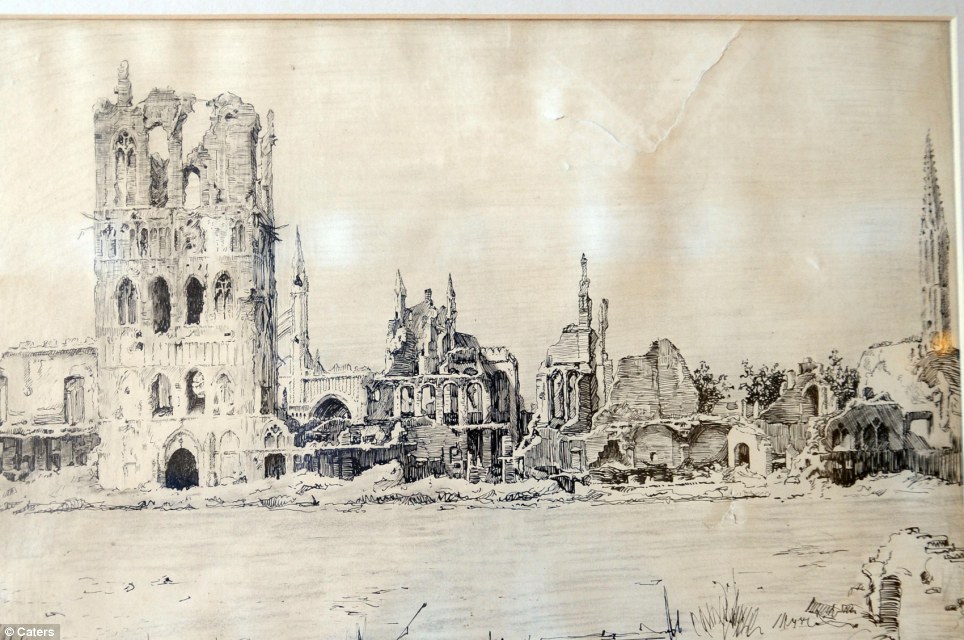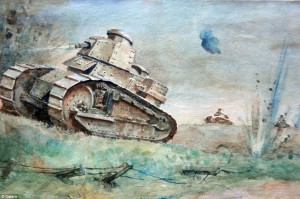 Lieutenant Kenneth Edwin Wootton was a tank operator in the trenches of the Western Front during World War I. He operated the lead tank in his section and was on the front lines of many battles, taking out machine gun emplacements.
Lieutenant Kenneth Edwin Wootton was a tank operator in the trenches of the Western Front during World War I. He operated the lead tank in his section and was on the front lines of many battles, taking out machine gun emplacements.
He also happened to be an exceptional artist with pen and ink and watercolors who kept a journal of what he experienced and saw in battle between 1915 and 1917. He fought in the notorious third Battle of Ypres (aka the Battle of Passchendaele) which killed half a million soldiers on both sides for a few miles gained by Allied forces.
His writing is as vivid and powerful as his art. Here’s part of his entry on Third Ypres:
My driver Fagg could be seen anxiously peering through the half open window in July 1917 at the Third Battle of Ypres. I lit a cigarette as my mouth became quite dry, I lit another, it tasted rotten but I smoked it somehow as we got nearer the lines of burning shells.
We escaped with nothing more than lumps of earth falling around us. The German front line had been smashed almost out of recognition as we passed through shell holes and most were filled with filthy water and bodies.
Up the hill Fagg and I felt we were in for it as the Germans still held Westhoek and Gelncorse wood. I was kept busy dodging from side to side on my tank as a great many shells fell around us. I should have got inside but I hate being boxed up in the stifling heat of a tank. I felt safer in the open.
 He also records a Christmas Truce in 1916, which is notable because after the first and most famous Christmas Truce of 1914, the commands on both sides did everything they could to discourage such spontaneous eruptions of humanity, including resorting to threats of hard punishment for any soldier engaging in fraternization with the enemy.
He also records a Christmas Truce in 1916, which is notable because after the first and most famous Christmas Truce of 1914, the commands on both sides did everything they could to discourage such spontaneous eruptions of humanity, including resorting to threats of hard punishment for any soldier engaging in fraternization with the enemy.
Christmas Day 1916, Ypres: Distance between the line was 100 yards. Had an excellent Christmas dinner in a dug out, turkey, Christmas pudding, mine pies, fruit and champagne. Both sides stopped. Did patrol from midnight till 3am and felt very merry.
So there were no twinkling lights, no hanging out, sharing food, cutting each others’ hair like there had been in 1914, but at least they stopped shooting at each other long enough to enjoy a decent Christmas meal.
The last entries in the diary describe his time in a hospital in Rouen after an explosion almost killed him. He was discharged from the military due to the injury, receiving a Military Cross for conspicuous gallantry and devotion to duty upon his return. He stashed the diary at that point and it remained incognito until his great granddaughter inherited some old books and papers and found the diary among them.
She’s selling it (sigh) at a Hansons Auctioneers sale at the end of September. The estimated sale price is £3000 ($4700), a steal considering its far greater historical value.

